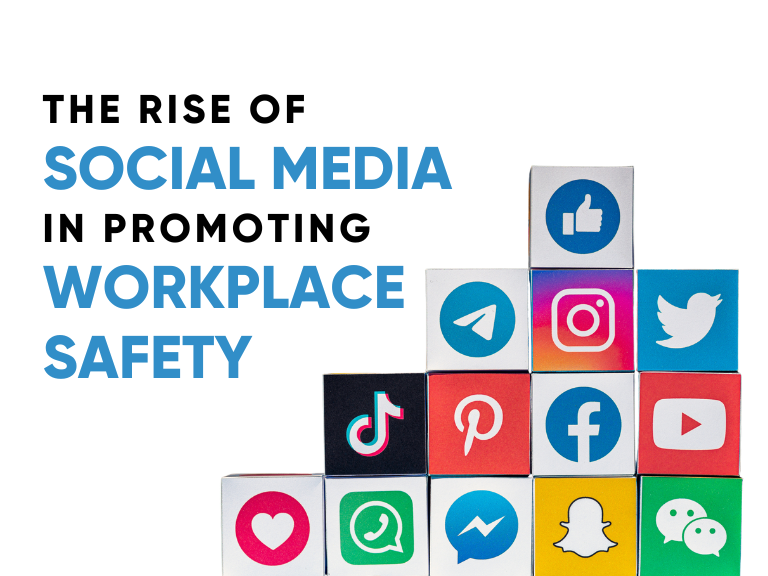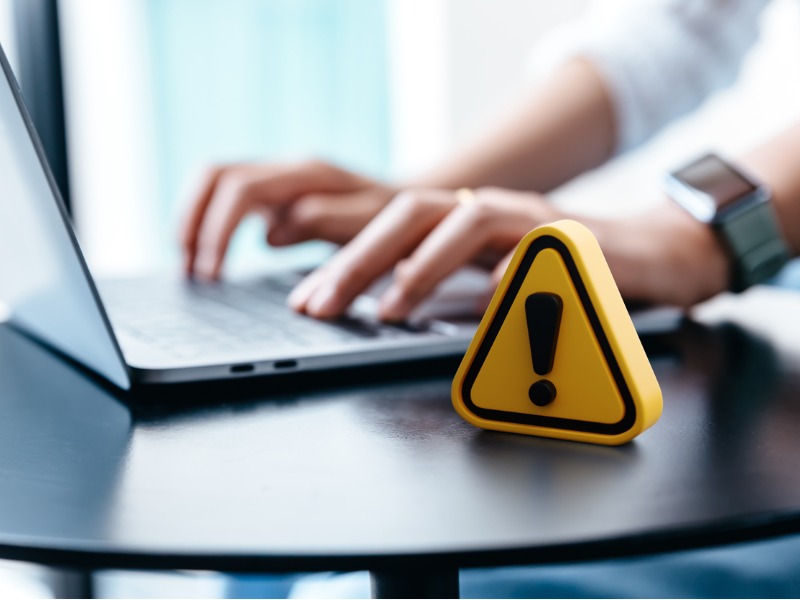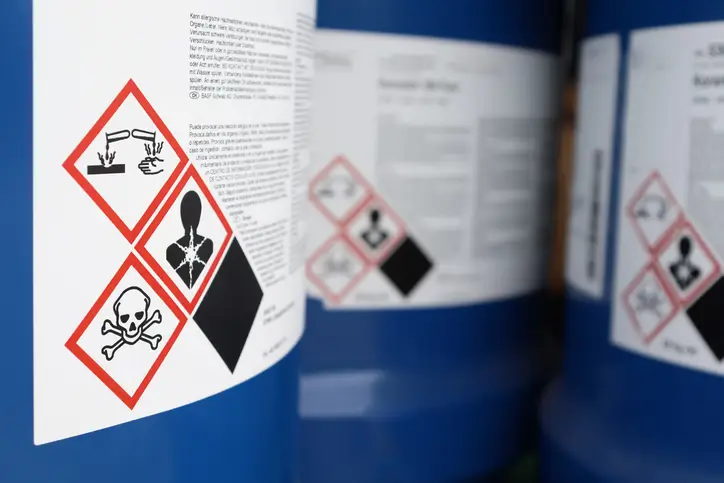The Role of Social Media in Spreading Workplace Safety Awareness
Workplace safety has always been a paramount concern for organizations worldwide. Ensuring the well-being of employees not only safeguards their health but also contributes to increased productivity, reduced turnover, and enhanced company reputation. In recent years, the rise of social media has brought about a transformative shift in the way workplace safety is promoted and implemented. This article explores the growing role of social media in enhancing workplace safety and highlights the various ways in which it is making a positive impact.
According to research, using social media to spread awareness about occupational hazards has proven to be impactful. Almost 41.6% find that it is one of the most effective ways to implement workplace safety worldwide.
The Relationship Between Workplace Safety and Social Media

Social media platforms like Facebook, Twitter, LinkedIn, Instagram, and others have provided organizations, employees, and safety professionals with new channels to communicate and promote workplace safety. Here’s how social media has been instrumental in this regard:
The Evolving Landscape of Workplace Safety
Workplace safety has come a long way over the years, with many regulations and standards in place to protect employees. However, it is an ever-evolving field that continuously seeks to improve safety measures and practices. Social media has become a valuable tool in this evolution, allowing organizations to adapt more quickly to new challenges and to disseminate information and best practices more effectively.
Rapid Information Sharing
One of the most significant benefits of social media in promoting workplace safety is its ability to facilitate rapid information sharing. In the past, disseminating crucial safety information could be time-consuming and inefficient. Today, platforms like Twitter, LinkedIn, and Facebook allow organizations to share updates, alerts, and safety guidelines instantly. This real-time communication is essential for addressing emergencies, providing updates on safety protocols, and reaching employees on time.
Employee Engagement and Education
Social media has also transformed the way organizations engage with their employees regarding safety. Platforms like YouTube and Instagram are particularly effective in delivering engaging, visual content that can help employees better understand safety procedures and protocols. Short videos like reels, infographics, and interactive posts can turn complex safety guidelines into digestible, memorable information.
Safety Campaigns and Challenges
Social media has enabled organizations to launch safety campaigns and challenges, making safety a more interactive and enjoyable aspect of the workplace. For example, a company can create a safety-related hashtag or challenge on Instagram and encourage employees to share their safety stories, tips, and best practices. This not only raises awareness but also makes safety a shared responsibility among the workforce.
Incident Reporting
Incident reporting is a critical component of workplace safety. Social media provides employees with a convenient and discreet channel to report incidents or near misses. Some organizations have developed dedicated apps or platforms for this purpose, ensuring that employees can report incidents confidentially. Prompt incident reporting allows for faster response and corrective actions, reducing the likelihood of recurring incidents.
Safety Training and Certification
Social media platforms can serve as a hub for safety training and certification programs. Companies can create online courses, webinars, and workshops related to safety, which employees can access at their convenience. Additionally, some organizations use social media to track and record employees’ safety training progress, making it easier to ensure that everyone is up to date with the latest safety practices.
Monitoring and Compliance
Social media also plays a role in monitoring workplace safety and ensuring compliance. Organizations can use platforms to share regular updates on safety compliance requirements and regulations. They can also conduct safety audits or inspections and use social media for internal reporting and tracking of safety performance. This transparency can help prevent lapses in safety practices and foster a culture of accountability.
Crowdsourced Safety Ideas
Social media allows organizations to tap into the collective knowledge and creativity of their workforce. Companies can run contests or challenges where employees submit safety improvement ideas, and the best suggestions are rewarded. This approach not only encourages employee engagement but also leads to innovative safety solutions that may not have been otherwise considered. For instance, OSHA Outreach Courses use engaging imagery and games where users are asked to spot a hazard in a construction site.
Crisis Management
During crises or emergencies, social media can be a powerful tool for disseminating information and keeping employees safe. It can be used to provide real-time updates, safety instructions, and evacuation procedures. Social media also enables organizations to quickly identify and respond to any misinformation or rumors, helping to maintain order and trust during challenging times.
Influencers and Thought Leaders
Many organizations leverage the influence of safety experts and thought leaders in their industry through social media. They can partner with experts to create and share safety content, which lends credibility to their safety initiatives and reaches a wider audience. Influencers can also help in raising awareness and promoting the importance of safety within and beyond the organization.

In today’s digital age, leveraging OSHA’s resources in combination with social media can enhance workplace safety efforts. Here you will read the significant ways in which organizations can utilize OSHA and social media to promote a safer work environment.
OSHA has an active presence on various social media platforms, where it shares updates, resources, and educational materials related to workplace safety. Their accounts feature information about workplace hazards, safety regulations, and industry-specific guidelines. This accessible information empowers workers and employers to better understand and comply with OSHA regulations.
OSHA has embraced the digital era by providing extensive online resources that employers and employees can access. Their website (osha.gov) offers a wealth of information, guidelines, training materials, and publications related to safety in the workplace. Employers can leverage these resources for training, policy development, and to stay updated on the latest safety standards.
OSHA also offers a set of interactive online tools (eTools) that cover a wide range of topics, from hazard identification to safety management. These tools are designed to assist employers and employees in identifying and mitigating workplace hazards.
Organizations can use OSHA eTools as a part of their safety training and awareness campaigns. They can guide employees through hazard assessments and prevention strategies. Sharing these eTools through social media platforms can reach a broader audience and empower employees to actively participate in safety efforts.
OSHA has an active presence on various social media platforms, where it shares updates, resources, and educational materials related to workplace safety. Their accounts feature information about workplace hazards, safety regulations, and industry-specific guidelines. This accessible information empowers workers and employers to better understand and comply with OSHA regulations.
OSHA has embraced the digital era by providing extensive online resources that employers and employees can access. Their website (osha.gov) offers a wealth of information, guidelines, training materials, and publications related to safety in the workplace. Employers can leverage these resources for training, policy development, and to stay updated on the latest safety standards.
OSHA has initiated numerous educational campaigns through social media to target specific workplace safety issues. For instance, campaigns on fall prevention, heat safety, and respiratory protection have reached a wider audience through engaging visuals and informative content. Examples of safety awareness campaigns include National Safety Stand-Down for fall prevention, the Heat Illness Prevention campaign, and the Respiratory Protection initiative.
Organizations can create and share informative content related to OSHA guidelines, safety tips, and best practices. Regularly posting safety-related content on social media helps to educate employees, raise awareness, and create a culture of safety within the organization.
OSHA encourages followers to engage with its social media content by asking questions, sharing their experiences, and providing feedback. This two-way communication fosters a sense of collaboration and shared responsibility for workplace safety. Social media provides a convenient channel for employees to provide feedback and report safety concerns.
Organizations can encourage employees to use designated social media channels to share their observations, incidents, and suggestions for improvement. This creates a direct and transparent line of communication for addressing safety issues promptly. Employers should respond to such reports in a timely and respectful manner. This not only demonstrates a commitment to safety but also encourages open dialogue, making employees feel valued and heard.
Employee advocacy refers to the practice of employees sharing company-related content on their personal social media accounts. Organizations can encourage employees to become safety advocates by sharing safety-related posts, OSHA updates, and their own experiences and insights.
When employees share workplace safety messages, it extends the reach of safety messages to a broader audience. It also conveys a sense of collective responsibility and commitment to workplace safety.
End Note
Impact of social media in the workplace safety messaging cannot be overstated. OSHA provides a wealth of information and tools that organizations can use to educate their workforce and ensure compliance with safety regulations. No offense in saying that social media platforms offer a dynamic and interactive way to engage employees, raise awareness, and foster a culture of safety. Lastly, workplace safety campaign powered by social media has the power to make workplaces safer and more productive.






